
 |
Home | Timeline | Breweries | Pubs | Research Resources | Contact |
Anyone who knows the story of the rise of the Cobbold family in Ipswich knows that in 1746 they founded their powerbase at the Cliff Brewery in Ipswich. Their brewing ambitions had started at Harwich and although it is now known that the operation at Harwich wasn't abandoned when the Cliff Brewery came on line it was a leap to a much larger scale and was used as the springboard to greater things.
When we look at the Cliff Brewery now what we see is basically the brewery that was rebuilt and extended between 1894 and 1904. Large sections of the old brewery were demolished during this time and what original parts survived were pretty much erased during the 1904 expansion.
The brewery finally changed shape again in the 1990s when production moved away from the Victorian apparatus and into, effectively, a modern microbrewery out the back. This left the old building free for brewery tours and gave the economy the modern business required. Everything, of course, changed again in 2002 when the brewery finally closed and it remains today, in a virtually mothballed state, protected by its Grade II listed status but slowly decaying.
Moving back in time to 1746 it is easy to see why Thomas Cobbold set up where he did. He had been plagued by the troublesome water supply at Harwich for some time and although moving up-river disconnected him from some of his customers he could obtain good water and malt in Ipswich and use the Harwich operation as a staging post. In fact it is quite possible that the Cobbolds started off in Ipswich malting barley and decided to take over the Harwich Brewery - probably from George Rolfe - having previously supplied it with malt. Certainly there are stories of the Cobbolds supplying malt to brewers as far afield as London. Water transport was the only way this could happen so it is quite possible that having had good success at Harwich Thomas Cobbold decided to setup a new, larger brewery close to his maltings at Ipswich.
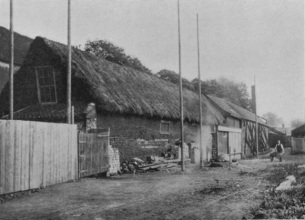
Old Maltings at the Cliff Brewery prior to 1894
The original Cliff Brewery was probably a good deal larger than the one at Harwich but we will probably never know its exact size. It is quite clear that, in common with many breweries, bits were added over the years until in the late 19th century the complex was not fit for purpose and the brewery simply had to be rebuilt.
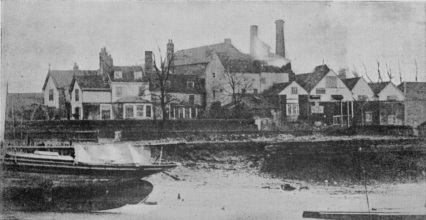
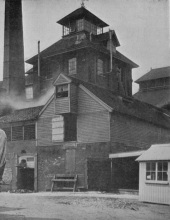
The old brewery before the 1984 rebuild and part of the old building left standing after the rebuild
That said the new brewery wasn't greatly larger in terms of the ground it stood upon than the one it replaced. It was just that the old brewery had evolved bit-by-bit and the new one was designed to do exactly what it was supposed to do - brew beer in an age when the brewery process had been industrialised. To achieve that designs of the day made use of gravity - the so-called tower brewery - so the raw materials started at the top and made their way downwards, via the brewing process, to be matured and put in casks at the bottom.
So - over a two year period from 1894 to 1896 a new brewery replaced what went before but it was a staged process and was probably carried out by Cobbold's own people. Certainly the driving force behind the design was William Bradford & Sons, the eminent London brewery architects but we know that parts of the old brewery were retained after the 1896 rebuild was complete so in some ways the organic expansion of the brewery simply gathered pace in the late Victorian period as opposed to there being a defining moment when a complete new brewery suddenly appeared and analysis of old maps and photographs support this idea.
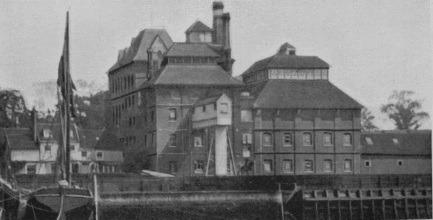
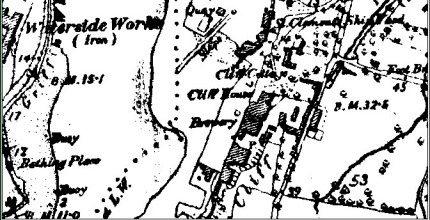
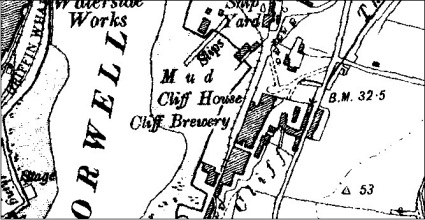
The Cliff Brewery after 1904 plus OS map detail from 1887 and 1905
After this period of frenetic development it seems that the brewery underwent little change until it was closed in 1989. Of course equipment was modernised and capacity upped as the tied estate increased and the merger with Tollemache meant that beers once brewed at the brewery in Upper Brook Street now had to be brewed at Cliff Quay.
After the management buyout things changed and with no large tied estate to guarantee sales the capacity offered at the Cliff Brewery was just overkill. The decision was therefore made to build a new, smaller brewery in buildings on the site and the old plant turned into a museum. Thus tourists could be staring into the old mash tuns whilst beer was being sparged out the back in the new ones. It was an interesting decision and one that worked well.
Unfortunately no business stands still and the 2002 merger with Ridley's meant that the Cliff Brewery was really surplus to requirements and new rumours about potential redevelopment of the site quickly surfaced.
The 1989 closure, however, had prompted Ipswich Borough Council to list the brewery building and its contents and the proximity of the Vopak Terminal mean that scope for redevelopment is very limited.
Indeed the brewery buildings stand today pretty much as they were left in 2002 and 260 years after brewing started at the site and 100 years after the Victorian expansion, the future for this imposing collection of buildings seems very uncertain.
The Cliff Brewery is a great landmark in Ipswich and the Cobbold family are hugely important in the history of the town. Yet the detailed early story of the cliff brewery and the Cobbold's rise to power is not well documented. Hopefully with reference to original source documents it will be possible to understand how the farmers became maltsters and brewed at Harwich before constructing their Ipswich powerbase - starting with the Cliff Brewery.